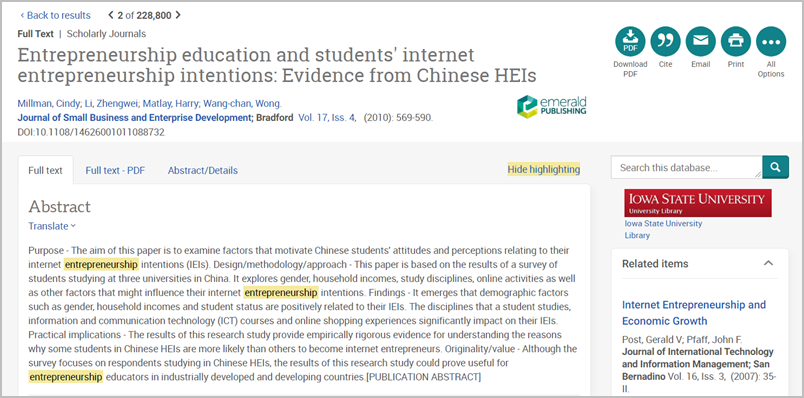As a writer, there are also reasons to cite your sources:
You are likely familiar with the first three reasons already, so let’s examine the last one in more detail. How does citing sources lend credibility to your argument? Research is a process where scholars build on older work while sharing their new ideas. When you cite others’ research, you’re doing the same thing. By citing a scholar that has done research on your topic area, you are using their authority and experience to support your claims, and adding your own insights.
Whenever you use someone else’s ideas, you need to cite them. This is true for any source where there is interpretation involved (opinions, research findings, recent discoveries, statistics, etc). In the examples below, we’ve bolded words that indicate you probably need to cite a source:
No matter where ideas come from you still need to cite them, whether they’re from images, tables, charts, statistics, websites, podcasts, interviews, emails, speeches, songs, movies, or any other source.
Once you’ve found a good source for your research, you may be provided with a few options for getting access to it. From the item’s record, you can decide to skim the article’s abstract, read it right away, or save it to read later. For example, in the business database ABI/INFORM, buttons provided in the top right corner show your access options: download pdf, cite, email, print, and more.
